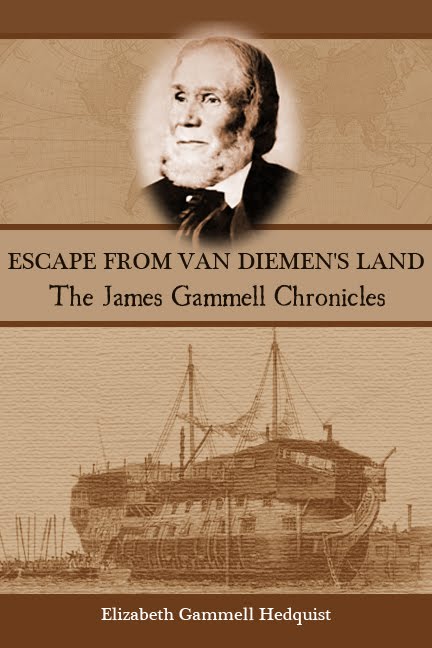 |
| Photo courtesy of Bary Gammell |
1932 – James Gammell’s eldest child, Orlin Fitzgerald Gammell, died shortly before six o’clock on Monday morning, February 15, at Sheridan, Montana. He was eighty-five years old.(1)
Healthy and strong as an ox, just like his father, Orlin had experienced very little sickness or ill health during his life. In his prime he was a man of splendid physical build. A trained carpenter and a skilled craftsman, he built numerous barns and houses in Sheridan. Probably the best known of his projects was the Sheridan Public Library on Mill Street, which he built along with his partner Ed Wright. Orlin was eighty-one years old when he built his last home in Sheridan and finally retired from the carpenter trade. Even as his strength was failing in his final years, he never complained of any aches or pains.
At the time of his death, Orlin was the oldest Montana pioneer who still resided in Sheridan. He was well-known and respected among the townsfolk; children and adults alike greeted him affectionately as “Daddy” when they met him on the street. Every morning he was seen walking uptown to the Sheridan post office to pick up the newspaper. He was keenly interested in political issues and world affairs, a trait he’d picked up from his Uncle John Fitzgerald.
For the first nineteen years of his life, Orlin had lived with his mother’s family in Spring Arbor, Michigan. In 1866 he left Michigan and traveled to Sheridan to visit his father, whom he hadn’t seen since he was a small boy. After a year or so, he left Montana for Texas, possibly to visit his uncle, William Gammell. From Texas he traveled to Nebraska. He stayed there a couple of years and then moved on to Anita, Iowa, where he entered an apprenticeship for the carpenter trade. Here he met his wife, Sarah Louise Lewis. The couple was married on October 8, 1876, in Atlantic, Iowa. All three of their daughters, Harriet, Alta, and Vesta, were born in Anita. When Orlin first arrived in Iowa, he was joined by his mother’s brother, Jacob (Job) Fitzgerald, from Michigan. A bachelor in his late fifties, Uncle Job lived with the family for nearly ten years and helped Orlin run the farm.(2)
 |
| Orlin F. Gammell, his wife, Sarah, and three daughters, (left to right) Vesta, Harriet, and Alta. c. 1910. |
In spring 1889, Orlin and his family moved west to Los Angeles, California,(3) where there were plenty of jobs for skilled carpenters. Nearly fifteen years later, in 1903, the family left California, moved to Sheridan, Montana, and used the money they had saved to buy the Goetschius ranch on the Beaverhead River. They operated the ranch for only about two years, and then decided to return to California. This time, according to their granddaughter Dorothy Carey, they settled in Santa Rosa,(4) the county seat of Sonoma County, one of the most heavily populated counties in the state. Business was booming in the Bay area, and carpenter jobs were plentiful.
 |
| San Francisco: April 18, 1906 Looking Down Sacramento Street the results of the earthquake and the beginning of the fire (Wikimedia Commons) |
The next several months passed by quickly and peacefully, and then without even a hint of warning, everything changed. At 5:00 in the morning on April 18, 1906, the infamous San Francisco earthquake destroyed the whole downtown area of Santa Rosa. The earthquake and the fire that resulted are still considered one of the worst natural disasters in United States history. More than 3,000 people died and nearly 300,000 were left homeless. Although the death toll in Santa Rosa was not as great as in the city of San Francisco itself, the economic impact was severe. The recovery would take several years. Rather than live in a makeshift tent in a refugee camp, Orlin took his family back to Montana, where he remained for the rest of his life.
After the death of his wife, Sarah, in 1912, Orlin lived with his daughter Alta. When Alta married in 1922, she and her husband, Walter Moore, continued to care for her father. Orlin’s obituary describes his final years, “Accustomed to abounding health and activity, he was sorely tried by failing strength in later years, but bore his affliction with great patience and died as he had lived, in peace and tranquility with God and man.”(5)
Orlin died peacefully from the infirmities of old age and was buried with Masonic funeral rites in the Sheridan Cemetery next to his father, James Gammell.
_______________________Orlin died peacefully from the infirmities of old age and was buried with Masonic funeral rites in the Sheridan Cemetery next to his father, James Gammell.
- Orlin F. Gammell, obituaries: Montana Standard, Butte, Montana, February 16, 1932, p. 4, c2; copy , " 'Daddy' Gammell Died Monday...", from an identified Montana newspaper, February 19, 1932.
- 1880 U.S. Census, Grant, Cass; Iowa. 1885 Iowa State Census.
- 1900
U.S. Los Angeles Los Angeles County ,California - Carey, Dorothy Ellinghouse, Pioneer Trails and Trials, Madison County History Association, 1976, pp. 468-69.
- Orlin F. Gammell obituary (copy), “’Daddy’ Gammell Died Monday…”, from an unidentified
Montana February 19, 1932 .
